-
Recent Posts
Categories
Author Archives: Janice Stieber Rous
No comments
On Nourishment
A dialogue between Janice Rous and Madelyn Ilana about nourishment, the archetypal feminine, the great mother, caregiving, and living from the heart.
A Conversation on Hip Surgery
Body Dialogue founder and teacher Janice Stieber-Rous is discussing with her long-time student and friend Madelyn Ilana how she decided to have a hip replacement.
A note from a new vantage point
This note went out to my mailing list on January 19, 2020, 8 days after my surgery. I share it now as I continue the healing process.
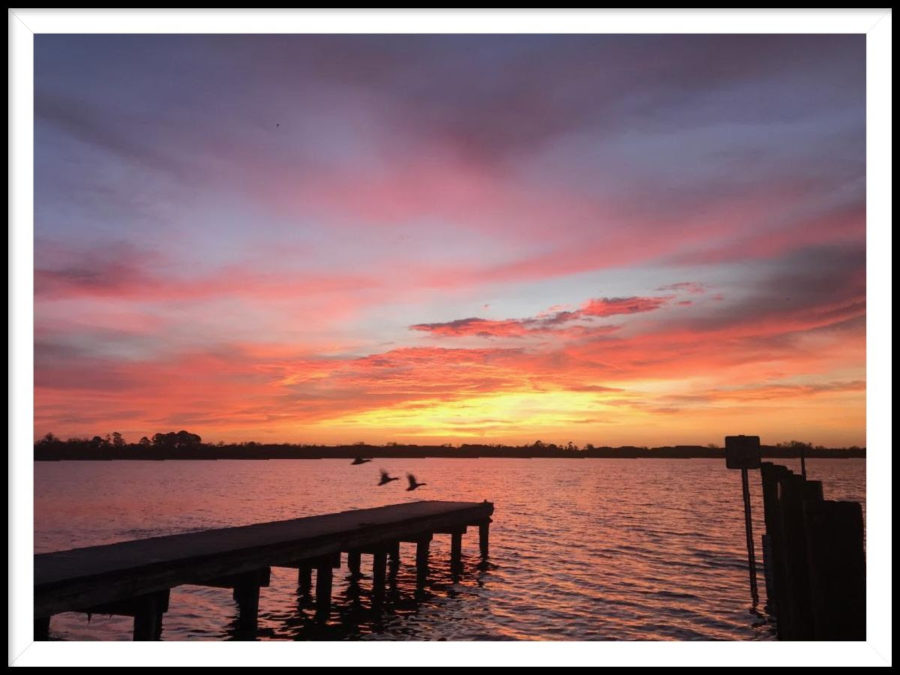
Dear friends,
It’s been eight days since surgery, and yesterday I actually went to a restaurant with a walker and my new hip. I say it that way because it is not actually a part of me yet. I can feel that it’s working hard to join the rest of my body that knows me so well, but this new hip and I are not yet best of friends. It throbs at night and makes for an awkward and stiff gait that has never been really the me that I enjoy. At the worst of times I fear I will never be myself again, and then my rational mind looks at all the progress already made.At night I listen to meditation tapes to quiet my fears and discomfort, but during the day my life is pretty single focused. I do therapy, I rest and I walk. I have little attention for the world.It’s hard to chat and have simple conversations because I am preoccupied. I am delighting in all the well-wishes and love coming to me from every direction. It brings to mind my days when the roles were reversed and I was the visitor bringing news of the outside world.I understand why the sick friends whom I visited wanted to hear about me. It becomes a very insular world just thinking about your particular aches and pains. On the other hand, it has slowed my pace and made me mindful in ways I rarely was before. This morning the sunrise woke me up and I sat at the window in sheer awe and delight.
My last blog elicited many responses and my heart was filled with appreciation to hear from those of you who wrote. It means so much to know that these words actually land in someone’s heart/mind.
I send you blessings today and hope you are as filled with awe and gratitude as I am when you see the new day.
Love and blessings,
Janice
Rewiring my Brain
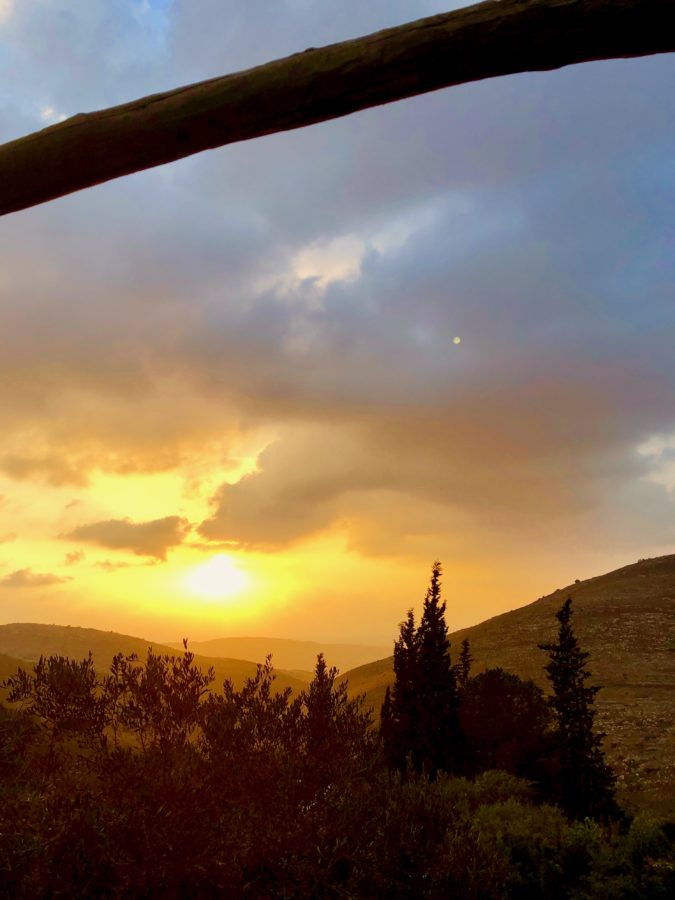
I know it is my hip that was removed and a new hip installed, but I actually feel I am rewiring my brain.
Today I have entered my fourth week after my surgery. I am amazed at how much I love the slowness and simplicity of the life I have had in those weeks.
My priorities are so clear. Every day I tend to my body in the form of my exercises and I tend to my mind by meditating. I try to stay openhearted and clearsighted as much as possible and not fall back into old thought patterns.
I remember feeling something like this when I had my hysterectomy back in 1997.
I thought I would never forget how good it felt to go slowly and to have much less on my schedule than was my usual pattern.
To focus and simplify my life down to manageable goals every day became my mantra.
I knew then and I know now that RUSHING is not an option. It results in breathlessness and anxiety, my two enemies.
As I start to re-enter the world, I feel very tender toward this new-found energy. I want to be met with this gentle, soft awareness. I feel a kind of precious knowing that this state of being is preferable to the old way of feeling always slightly out of balance with a little too many plates spinning in the air.
Then, I believed my self-worth was dependent on how much I did. I believed life is too boring if you slow down.
Now I feel that the amount I do and what I accomplish daily is only measured by the quality with how I do it. At the center of my actions is my love of each and every encounter, be it with nature or with another human.
Deepak Chopra says perfect health is finding daily balance. That is an awesome goal, since balance has always been a great goal of mine, but one that proved elusive.
I also think balance is not static. It is finding the flow and fluidity of our body-mind. It is recognizing what takes us out of flow and fluidity. It also makes decision-making easier since that goal is a center point for me.
As I re-enter the bigger world, I pray I can continue to remember some of the biggest lessons I have received from this experience.
Since I have heard from many of you that these blogs are helpful, I’d like to ask you to say more about your idea of perfect health and how it relates to FINDING your balance.
A New Normal
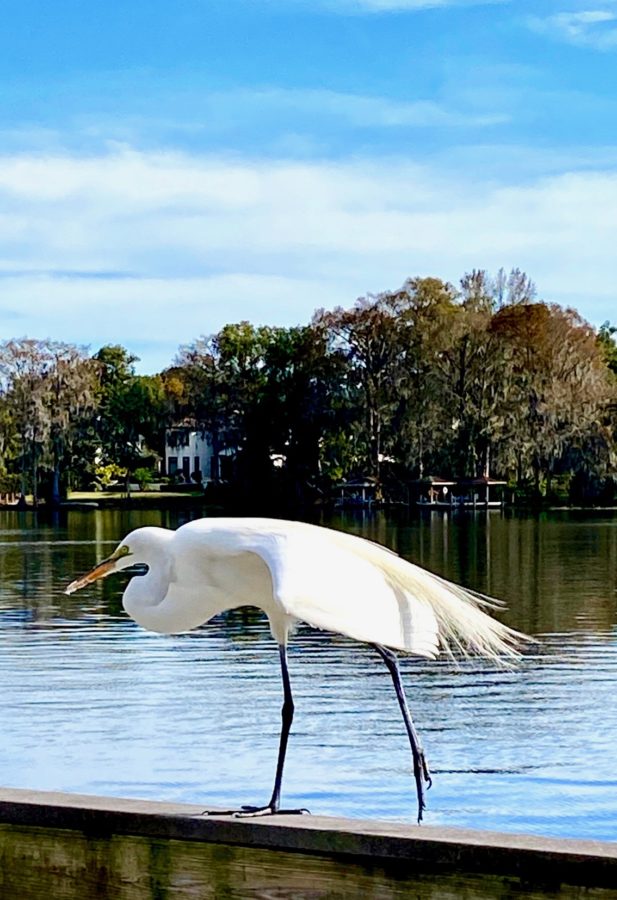
Today I was mesmerized by a white egret in a dance of one-legged preening and cleaning on my dock.
He regally alighted three feet from me and then set out to show me his ritual that probably is part of his daily life self-care.
I marveled and sat up tall, as I am now two weeks out of my hip reconstruction and have a new self-care ritual.
Not the one I had most of my life, a new one.
It is a new normal.
It is a chance to integrate a new body part into my beloved best friend that I have taken good care of all my life.
So once again I say YES to life. I say YES to choosing to have a total hip replacement.
Some of you have written to me in response to my blogs, feeling worried, and concerned for me.
But actually I feel like celebrating!
I was scared, but I overcame the fear, by taking a risk to create a healthier future. I said NO to fear and yes to risk and challenge.
So here I sit typing my observations of my new normal.
I am slower, more awake and aware, and feeling immune to the rush of the outer world. I am happy to be home to reconnect with friends and to have time with my precious daughter and my partner.
All in all, I am here to report my dance is continuing and I am better than ever.
It is a new dance with a new dance partner — my body — but she is still my best friend. We are simply learning a new rhythm and some new steps.
Is my leg stiff? Yes.
Do I need to build strength? Yes.
Do I feel encouraged and enlivened by the fact that I listen well and rest when I need to?
Yes.
So, all in all, I am not in fear.
I am mostly in GRATITUDE. I am in awe that after two weeks my body is accepting this new way of being and we are co-creating a new series of moves.
I am not worried that this might take a while since I have the rest of my life to get better and better.
Thanks to all who are writing. It brings joy to my heart to connect and feel our relationships. If you do not write that’s fine too, BUT if you want to be in dialogue, just say hi.
Blessings to you in all your steps.
With appreciation,
Janice
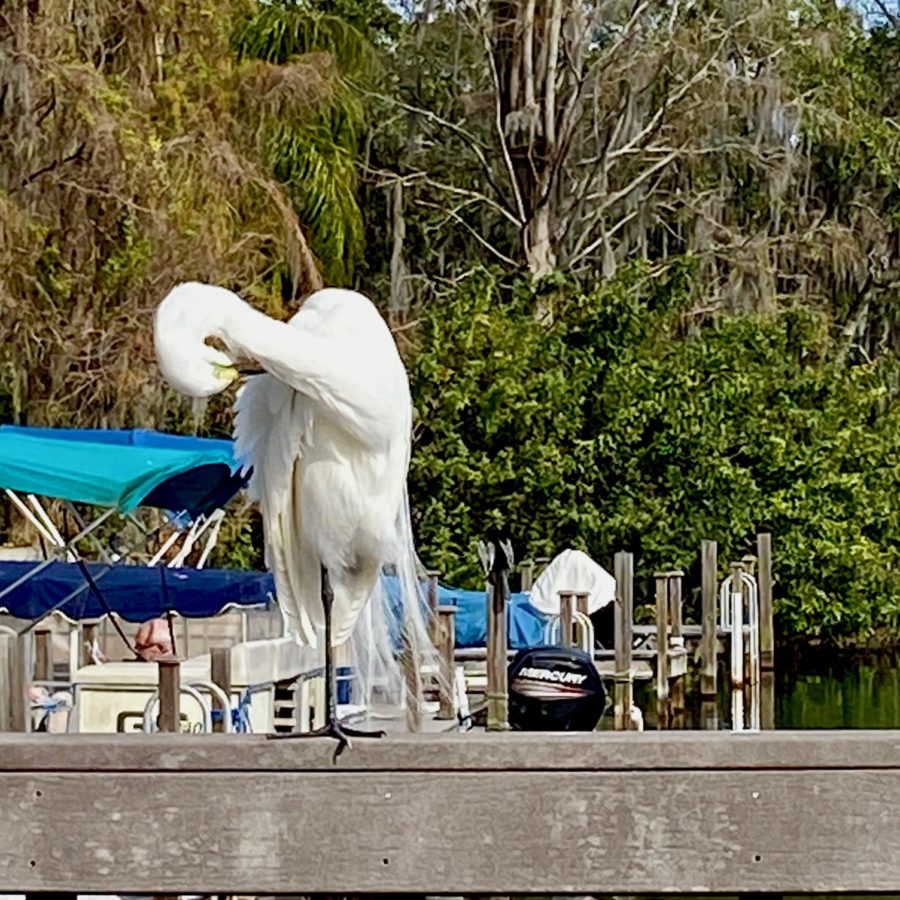
A New Body Dialogue
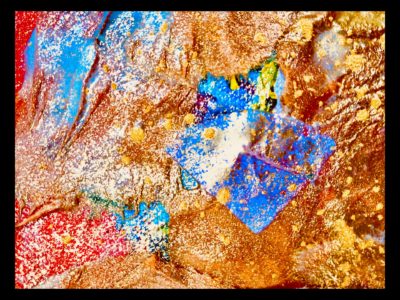
I saw a doctor three years ago, and, after hearing my symptoms and taking an X-ray, she said, “One day you might need a hip replacement.”
With absolute certainty, I said that I would never need a hip replacement. I believed I could manage the pain and work to correct the problem.
I said NEVER. I will never have a hip replacement.
So how is it, then, that on January 10, 2020, I will have surgery? How did that happen? What made me decide the time had come to get the surgery and move on?
“Never” is a curious word.
How can you be so certain of something and then life actually makes you change your mind?
I used to come to Florida to visit my mom. She suggested I consider moving here one day. I said, “REST assured, Mom . . . I will never live in Florida.” Yet here I am. I came to visit in 2005, and now I live here permanently. HOW did that NEVER become NOW?
I never believed my hip would become so bad that walking in the park with my daughter would be so hard that when my friend suggested surgery something in me said, “Maybe I need to consider that choice.”
I never thought I would need a car service to take my grandkids to the nearest playground to their home in Safed.
But after talking to my friends who had the surgery, I realized that the quality of my life and how much I can move with ease was very important to me.
In fact, since I have made the decision, many layers of healing have already begun.
Because I promised myself I would never do this surgery and have now changed my mind, I have had to examine what had previously kept me from considering it.
Was it simply fear that, as bad as the pain was, the risk of putting my body in someone else’s care and hands was too risky?
Was it simply that I hate hospitals and have done my best to stay away from them?
Was it that the fear of being dependent on others during recovery and having to take the time to repair my body from something so invasive was inconceivable?
I think all these factors have presented themselves to me.
Just today I saw a man with a walker. I see that and my mind says, “What if something goes wrong and my surgeon has a bad day”?
These worries are keeping me up at night.
I wake up in a sweat,
After all, I am a dancer. My body is my best friend.
She’s been my closest ally all my life.
My body is the source of pleasure. How is it that recently she is also the source of throbbing pain?
It’s not just the insult of aging.
It’s the attachment I have to be the best, healthiest, most body-smart 69 year old around. So much pride and hubris wrapped up in being the teacher who can heal herself; having to always know more than others.
After all, I started dancing when I was three years old. I have been working with my body and training her for as long as I can remember.
So it is with that attitude that I have embarked on this healing journey.
I am looking at what I have carried in this hip. What is the story that goes with having a hip and back that makes walking so hard? What is it to go deep into the healing of my whole pelvis and perhaps revisit my hysterectomy? I am quite certain that I actually never did the emotional work necessary for clearing the energy that was stuck as a result of that surgery.
So here I am, two weeks out, and I find myself in daily dialogue with this hip.
I am facing ancestral healing that is required on both sides of the female line in my pelvis, and now I am facing the discipline I need (and that I avoid) to be quiet and contemplative so I can be a partner in my healing with my surgeon.
I write this blog as a way to introduce this new BODY DIALOGUE that I have avoided and hoped would never be my story.
And here it is.
If you can relate to my story, I’d love to hear from you.
Thanks for listening,
Janice
Moving from Grief to Gratitude
Dear friends,
I was so thrilled to receive your responses to my last blog post, Improvisation: Building Resilience. Thank you to all those who wrote to tell me that they received value from my insights and reflections. It means so much to know that these blogs are helpful to some of you out there.
This post has a different emphasis. This post has a practical approach. I want to offer you a recording of a movement practice I taught this fall in the improvisation workshop that I co-taught with Judy Greenwald and Madelyn Sovern. I am offering it to you so you can have an experience of a Body Dialogue practice, whether you are in Central Florida and can join us at the Atlantic Center in New Smyrna Beach for the Grief to Gratitude workshop on December 7th, or if you are in your living room.
My observation is that no matter who we are or what we do, we need time to slow down these days and pay attention to our inner dialogue with our body and our thought patterns. We are moving so fast with so much distraction at every moment that I find it a useful practice to get down onto the floor and drop our attention out of our head and into our bones.
Simply giving over to gravity and finding time to open to a deeper breath can alter how we feel, think and act.
This session will provide you with an opportunity to drop deeply into the weight of your bones, to slow down and connect more deeply with your breathing patterns and restrictions, and begin to listen to your inner body dialogue.
My hope is that while you explore this technique you will feel restored and rejuvenated — more connected to yourself and your body. If you take the time, it will actually allow you to listen to those symptoms that might be showing up as aches and pains. Most likely, this practice will connect you to some held emotions that have been pushed down. You might meet some fear, sadness, or grief.
In the safety of your home you can let my voice guide you toward a deeper communion with your inner world.
I like to finish my practice session with a practice of gratitude.
Gratitude for giving myself the gift of time.
Gratitude for all that is good in my life.
Gratitude for those I love.
Gratitude for waking up and being able to simply BE, and feel my whole-hearted connection to my life force
Gratitude to my breath and bones as they help me to release any fear, grief, or any feelings that might be restricting my freedom and flow in life
Body Dialogue requires slowing down. It does not require a lot of time, but it does require the decision to stop and say yes to your self care.
In this process, your body may reveal to you secrets that will make your life richer, fuller and more vital.
Try this practice. I invite you to do this in any way that feels right for you. If you cannot do it all, try a part of it. Invite a friend to do it with you. We all need to drop deeper into our presence so we can bring what is best in us forward.
With grace and love,
Janice
Improvisation: Building Resilience
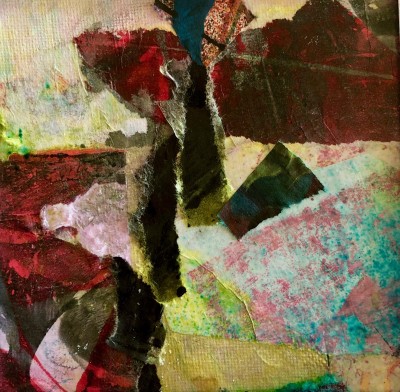 Improvisation is something we do from the minute we are born.
Improvisation is something we do from the minute we are born.
We do not need to think. We experiment, play, move, breathe, make sounds. It is a process of becoming human.
Without it we would not know how to walk, talk, or eat. Our ability to function as part of the human species depends on it.
Our brain’s plasticity depends on it.
The recognition of our mother’s face, the sound of our parents’ voices, depends on it.
In fact, our entire childhood depends on improvisation.
So what happened to that skill we had practiced so well as children?.
This question has been with me these past forty years since, as a young dancer, my greatest joy came from improvisation.
For many of us, schooling and socialization interrupted our ability to play and be spontaneous. Schooling is often about learning how to pay attention to others, how to conform, and how to get the right answers. It’s not about our inner world and imagination.
Some of us were lucky and kept our inner child alive by doing art, dance, music, but all of those forms can also shut down the playful spirit in us when we start looking for approval, applause and acclaim.
In fact I fear that we lose practice listening to our inner lives and to our symbols and metaphors because we are not encouraged to explore our imagination in school.
I was exceptionally lucky because I sought teachers who cherish imagination and the inner world. Richard Lewis and his Touchstone Center for Children in New York City offered one such opportunity. In 1969, I met this man who became my mentor. With him, I worked with young children, and they validated my joy in play and going into the unknown.
These are skills I honed. I believe transitions in life require us to learn to make time for reclaiming play, joy, and delight.
To learn to be resilient as we age, we’re required to be more trusting of our inner processes and our inner truths.
We’re required to learn how to find our center—how to breathe and move from that place.
So how do we go about this reclaiming work? Just as we did in childhood.
We need to practice skills that we once had mastery over but might have given up to the collective culture idea of socialization.
Some of the greatest artists, visionaries, and inventors have to rely on these skills.
We need to practice giving up approval. Not needing acclaim or applause.
We need to remember that joy of stepping into a moment as if it has no consequence. We can hear new desires and experiment with letting our spirits soar and hearts expand,
We need to delight in what we find is possible to create from moment to moment. We need to release control of the outcome.
For me, improvisation starts with how I prepare my day, with how I move into time and space.
It involves choosing with whom I spend time and how I prioritize my activities,
When I get so stuck in routine or perfectionism, I feel my presence is dimmed and my joy restricted.
I need to make time for play and allow time to unfold.
Reflecting on Chronic Caregiving
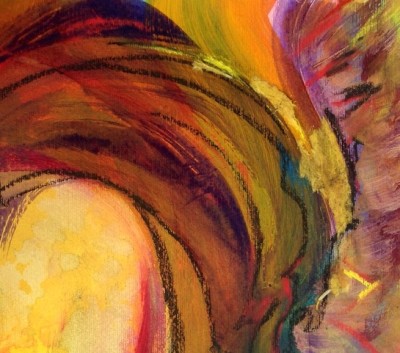 I have been really tired these past few months and have had a hard time sleeping. When I went to see a healer, he told me I am seriously depleted. He said my heart meridian is working 100 times more than the capacity my body can support, and 200 times what it’s meant to. What a metaphor to hear, that my heart is overworking!
I have been really tired these past few months and have had a hard time sleeping. When I went to see a healer, he told me I am seriously depleted. He said my heart meridian is working 100 times more than the capacity my body can support, and 200 times what it’s meant to. What a metaphor to hear, that my heart is overworking!
It seems I care for myself quite well, so how is this possible?
What I have been realizing is that I may be a chronic caregiver. I love being there for my friends, family and colleagues. When there is no opportunity for caregiving, I create one.
I have been looking at the pattern of chronic caregiving to examine how this kind of addiction gets set up.
I am noticing the following thought patterns:
1. I am deeply disturbed by the state of the world and I want to contribute to healing those who are suffering.
2. As teacher of Body Dialogue and a healing professional doesn’t it makes sense that now is the time to get to work?
3. I know that healing is a partnership, but what if everyone is too busy to take the time to breathe and create a better self-care practice? Does it become my job to do it for them?
4. Surely, if I give more love won’t I get more love in return? Isn’t it true that if I am a good person I will attract good people to me?
What is the motivation behind chronic caregiving? What are the ways this pattern gets set up? For me, this started in my early family life. Being the youngest child in a family of trauma survivors meant that in order to be taken care of and seen, I needed to be taking care of others. This behavior was set up so young that I wasn’t aware of the destructive aspect of it until I started having serious health problems. Time and again, healers would point out to me that continuing this behavior could result in an autoimmune disease.
On the one hand, we all need to be cared for. On the other hand, the care we each need is soul love. And this kind of love is rooted in our early experience with our mothers. The quality of energy we seek is a nourishment from the deep feminine. If we were deprived of nourishment in our earliest days, we will continually compensate by looking outside ourselves to get filled up and replenished.
In the collective, there is a great emphasis on self reliance and achievement that will never replenish us. We will continue to feel depleted. And I believe it is for this reason that we don’t know how to care for our bodies or to care for our mother earth. Only when we respect and honor the archetypal and personal mother, can we heal from this patriarchal wound.
How can we shower every nook and cranny of our soul with love and compassion? I believe this work can begin by recognizing our individual grief and allowing ourselves to be vulnerable enough to feel what is really happening inside. Only then can we become our own caregiver.
This piece of Erin’s expresses it so well…
Grief
As delicate as
The wings of a butterfly
A spider’s web
The surface of a calm pond…
The center of Grief
How do you reach down
And touch something
So fragile
So fleeting
So far away
Deep inside of me
How do I get there
And if I could reach
How do I put my finger on it
Without destroying the rest
Of my world
Would it all come crumbling down
On top of me
Or would I be
Lifted up
To a Higher place
Above such
Painful emotions
As Grief
What if, at the very Core,
Center of our Grief
There is
Absolute peace
What if, by touching our Grief,
We can change it
Into something beautiful
Something we can sit with
And admire
And give Gratitude for
What if we each tried
To reach that deep inside



